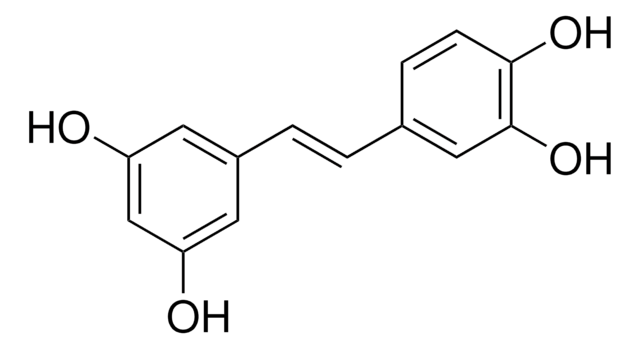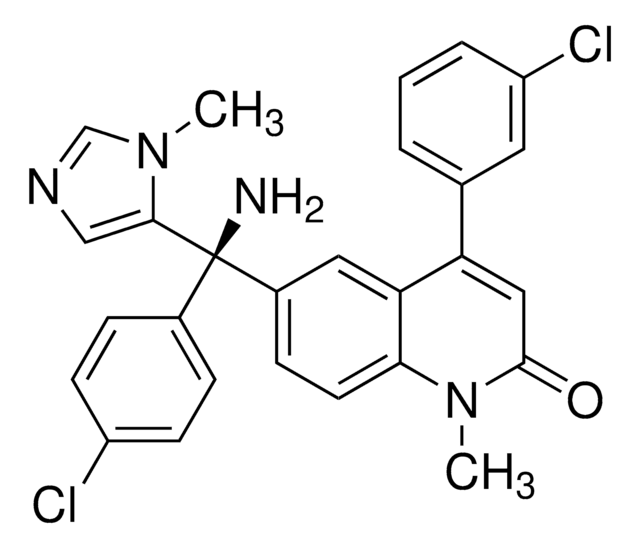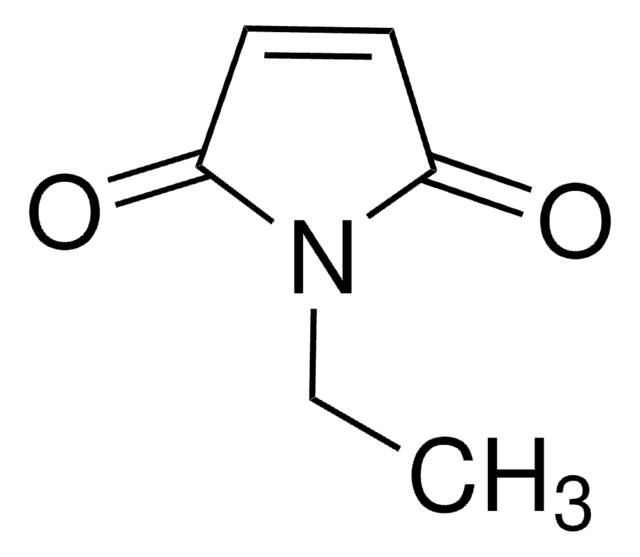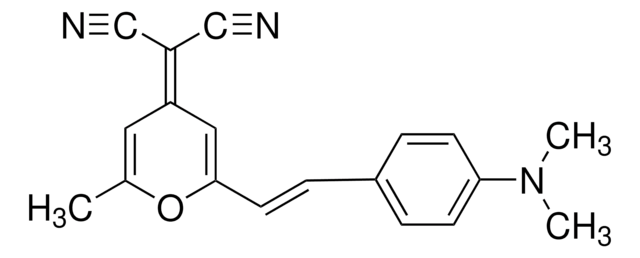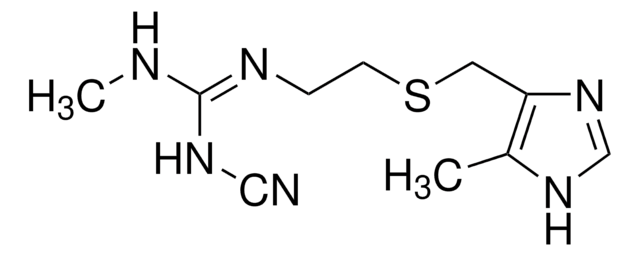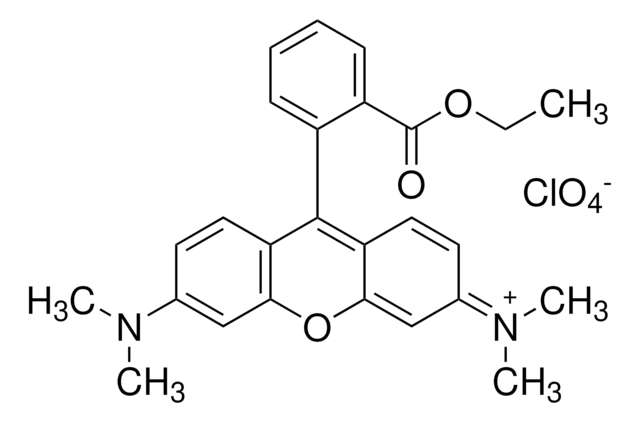Wichtige Dokumente
D3418
4-(4-Diethylaminostyryl)-1-methyl-pyridinium-iodid
≥97%
Synonym(e):
4-Di-2-ASP
About This Item
Empfohlene Produkte
Assay
≥97%
Form
powder
mp (Schmelzpunkt)
214-216 °C (lit.)
Fluoreszenz
λex 485 nm; λem 607 nm in methanol
SMILES String
[I-].CCN(CC)c1ccc(\C=C\c2cc[n+](C)cc2)cc1
InChI
1S/C18H23N2.HI/c1-4-20(5-2)18-10-8-16(9-11-18)6-7-17-12-14-19(3)15-13-17;/h6-15H,4-5H2,1-3H3;1H/q+1;/p-1
InChIKey
WIPKWLIHFGTFQV-UHFFFAOYSA-M
Suchen Sie nach ähnlichen Produkten? Aufrufen Leitfaden zum Produktvergleich
Verwandte Kategorien
Anwendung
- Two-photon absorption of organic / polyoxometalate hybrid dyes
- Acting as an acceptor for the 1D light-harvesting antenna
- Functional live cell fluorescence imaging for pulmonary neuroepithelial body microenvironments
- Studies of solvatochromism and dipole moments of monochromophoric styrylpyridinium dyes
Signalwort
Warning
H-Sätze
Gefahreneinstufungen
Eye Irrit. 2 - Skin Irrit. 2 - STOT SE 3
Zielorgane
Respiratory system
Lagerklassenschlüssel
11 - Combustible Solids
WGK
WGK 3
Flammpunkt (°F)
Not applicable
Flammpunkt (°C)
Not applicable
Persönliche Schutzausrüstung
dust mask type N95 (US), Eyeshields, Gloves
Hier finden Sie alle aktuellen Versionen:
Besitzen Sie dieses Produkt bereits?
In der Dokumentenbibliothek finden Sie die Dokumentation zu den Produkten, die Sie kürzlich erworben haben.
Kunden haben sich ebenfalls angesehen
Unser Team von Wissenschaftlern verfügt über Erfahrung in allen Forschungsbereichen einschließlich Life Science, Materialwissenschaften, chemischer Synthese, Chromatographie, Analytik und vielen mehr..
Setzen Sie sich mit dem technischen Dienst in Verbindung.![trans-4-[4-(Dimethylamino)styryl]-1-methylpyridiniumiodid Dye content 98 %](/deepweb/assets/sigmaaldrich/product/structures/416/722/5d59b6c3-5f2d-4396-a721-5cb82ba7038c/640/5d59b6c3-5f2d-4396-a721-5cb82ba7038c.png)



